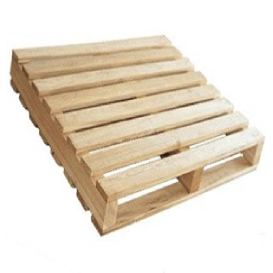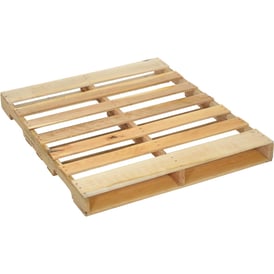International shipping is a complex industry with a language all its own. The more shipping terms you understand, the better-equipped you’ll be to move your freight efficiently and economically. To get you up to speed on some key terms, here’s a quick international shipping glossary,
 Arbitrary: The final leg of a trip on the water. If your ocean freight is bound to a port that can’t accommodate the largest container ships (e.g. Gdynia in Poland), that freight first moves to a large port (e.g. Hamburg) to be transloaded onto a smaller vessel. Your rate for this move includes the rate to the base port, plus the “arbitrary” rate. If you’re shipping to an arbitrary destination, make sure the rate you’re quoted includes both legs of the trip.
Arbitrary: The final leg of a trip on the water. If your ocean freight is bound to a port that can’t accommodate the largest container ships (e.g. Gdynia in Poland), that freight first moves to a large port (e.g. Hamburg) to be transloaded onto a smaller vessel. Your rate for this move includes the rate to the base port, plus the “arbitrary” rate. If you’re shipping to an arbitrary destination, make sure the rate you’re quoted includes both legs of the trip.
Bonded warehouse: A specially-controlled warehouse for storing goods until duties are paid. You might use a bonded warehouse, for example, when you import a containerload of high-value items, but you need just one quarter of that cargo now, one quarter next month, and the rest three months from now. Instead of paying duty on the whole load at once, you pay only on the product you remove, when you remove it. You will need a bonded trucker to transport your goods from the port to the bonded warehouse.
Bunker Adjustment Factor (BAF): A fuel surcharge that the steamship line adds to its basic rate to transport cargo between any two locations. The BAF rises and falls with the price of crude oil; the lines typically make those changes each month. In January 2020, as new regulations requiring the use of ultra-low sulfur fuel took effect, shippers were watching the market to see how this more expensive fuel would affect the BAF.
Carnet: An international Customs document that lets you import goods without paying duties, as long as you re-export them within 12 months. This document is also known as an ATA carnet, a merchandise passport or a passport for goods. You might use a carnet, for example, to import displays for a trade show, or to import equipment for a band or theater company on an international tour.
Container Freight Station (CFS): A key term for any international shipping glossary, a CFS is a warehouse whose main function is to consolidate and deconsolidate container cargo. In many cases, this is a bonded warehouse. On the export side, shippers and forwarders that need to transport less-than-containerload (LCL) freight give those loads to a CFS, which combines multiple shipments to fill a container. On the import side, the CFS unloads the full container and then either delivers the LCL shipments to recipients, or makes them available for recipients’ truckers to pick up.
Cut-off time: The last date on which a shipper or forwarder may deliver a container to a port or rail terminal. Ocean carriers usually assign different cut-offs to different kinds of cargo—for example, to regular cargo, hazardous cargo and automobiles. Missing your assigned cut-off can prove expensive. If the vessel sails without your load, you’ll pay to store the container at the port until the steamship line can put it on a later vessel. You might also have to pay a detention charge (see below). If you miss a train, the rail terminal probably won’t have room for your container, so you’ll have to pay your trucker to store it. In any of these cases, of course, your cargo will reach the recipient later than expected.
Dangerous Goods Declaration (DGD): The document a shipper must complete when shipping hazardous goods via ocean or air. This is the same requirement you face when shipping hazardous materials (hazmat) by truck. When you ship dangerous goods (goods that are flammable, explosive, toxic, corrosive, etc.), the person who completes the DGD must be certified to manage shipments of dangerous goods and thoroughly understand the regulations that apply.
Demurrage: A storage charge that a terminal or steamship line applies when you leave your loaded container on its property for too long. When you import a container, the line usually gives you up to five days (or two days for refrigerated containers) to retrieve it. Miss that deadline and you’ll pay $200 or more per day. You could also incur demurrage when you export a container. For example, you might deliver a container to the port but then find you have problems with the documentation. Thanks to those errors, your container can’t sail on the intended vessel. While you straighten out the problem and wait for another sailing, you’ll pay to store the container at the port. Rail ramps charge demurrage, too, and they generally allow fewer free days than ocean ports do.
Detention: A penalty for keeping a carrier’s container beyond the allotted time. When you pick up a loaded container and then take too long to return the empty, you’ll pay a detention charge for each day beyond the allotted free days. You might also incur detention (along with demurrage) if you take too long to retrieve a loaded container from the port. On the export side, you could incur detention if you receive an empty container at your facility for loading and then take too long to send it back to the port for shipping. The term “detention” is also used for over-the-road transportation, where time is measured in hours instead of days. A trucker who arrives at your facility gives you one or two free hours to load or unload. Exceed that time and you’ll pay detention by the hour.
Feeder: A smaller vessel that transports containers between major (base) ports and smaller ports. For example, trans-Atlantic ships from the U.S. bring containers to base ports such as Bremerhaven, Hamburg, Antwerp and Rotterdam. From there, steamship lines transfer many of those containers onto feeder vessels. A feeder might travel, for example, along the Baltic coast, dropping off containers and picking up others to bring back to the base port.
Heavy lift: Cargo that requires heavy duty equipment, such as a crane, to position it for loading onto a vessel. Every port has a tariff that lists what it charges for various services. One section of the tariff lists charges for handling oversize and heavyweight cargo. Cargo up to a certain weight incurs a forklift charge; heavier cargo incurs a standard crane charge; the heaviest cargo incurs a heavy crane charge. On top of that, the port usually adds a charge for at least four hours of labor. To make sure the port provides the right equipment and the transfer goes smoothly, it’s good to provide pictures or drawings of the load and indicate details such as the center of gravity and the lift points, where workers can hook up the crane. You might also need to hire heavy equipment to load oversize or heavyweight cargo on or off a truck at your own facility.
In bond: An international shipment that is stored, handled or transported before it clears Customs. The importer of record purchases an indemnity bond, which guarantees that the government will receive any duty and taxes it is owed. If you ship a container from Europe to Elk Grove, Illinois, for example, you might decide to ship it by rail, in bond, from the Port of Norfolk to Chicago because you have a good relationship with Customs officials in Chicago. Or, if you ship a container through a Polish port to Ukraine (which is not part of the European Union’s borderless Schengen Area), you would transport that cargo by truck, in bond, to the Poland-Ukraine border and clear it there through Ukrainian Customs.
Landed cost: The full cost to obtain a product, including the purchase price, all transportation and logistics costs and any duties, taxes or other fees that apply. When sourcing a commodity, it’s important to consider the full landed cost. The sale price from a supplier in Country X might be lower than the price from a supplier in Country Y. But if you have to pay more to ship from County X, or if there’s a 25 percent tariff on certain goods from that origin, that could change the entire equation.
Low-boy: A container chassis with a deck that lies as low to the road surface as possible. Compared with a standard chassis, a low-boy lets you transport taller loads with no worries about hitting overpasses or other hazards. With this extra leeway, trucks that haul oversize freight often can take more direct routes, rather than adding extra miles to avoid obstacles.
Mafi trailer: A wheeled platform used to move static cargo onto or off a RO-RO vessel (see below). Many of the items shipped via RO-RO, such as cars, trucks and construction machines, have their own wheels. But you might also choose RO-RO to move an oversize or heavy load that does not have wheels, such as a piece of production machinery. In that case, workers at the origin port use a forklift or crane to put the load on a mafi trailer, attached to a power unit, which they then pull onto the ship. At the destination port, workers lift the load off the mafi and transfer it to an over-the-road trailer.
RO-RO: An abbreviation for “roll on, roll off.” RO-RO is a method of ocean service that uses a vessel equipped with ramps, allowing wheeled vehicles to be loaded and unloaded without cranes. This international shipping term also refers to the type of cargo that travels on RO-RO vessels. RO-RO is used to ship cargo that can’t be disassembled to fit into a standard container, or out of gauge cargo that would be cost-prohibitive to ship in a specialized container (flat rack or open top). Along with wheeled cargo, a RO-RO vessel can accommodate static cargo through the use of mafi trailers (see above). Since not every port has a RO-RO terminal, when you ship RO-RO cargo you have fewer origin and destination ports to choose from than when ship containers.
Short-shipped: A load that is left behind on the dock when a vessel sailed. Usually, this happens when a steamship line overbooks a vessel and bumps some containers, just as an airline may bump passengers from a flight. A container also might be short-shipped due to extreme weather—for example, if it becomes iced to the ground or stuck in a snowbank. Or congestion on the rails might make a container miss the cut-off time for a sailing. In all these cases, since the shipper is not at fault, the steamship line does not charge demurrage or detention while the container waits in port for another sailing. Sometimes, though, a container is short-shipped due to shipper error. The line might refuse the container because of incorrect paperwork, or because the load isn’t secured according to standards set by the National Cargo Bureau (NCB). In that case, the shipper will incur extra charges while it corrects the problem and waits for another sailing.
Slow steaming: The practice of operating a cargo vessel at far less than its maximum speed. Steamship lines use slow steaming to reduce fuel consumption and carbon emissions, possibly allowing them to decrease the Bunker Adjustment Factor. When shipping volumes are low, ocean carriers may also use slow steaming to reduce the number of sailings in a lane, allowing them to run fuller vessels. A steamship line makes the decision to slow steam well in advance of any particular sailing. The arrival dates you see in a line’s sailing schedule are based on the speed at which vessels will actually sail.
Transshipment: The practice of moving a container from one vessel to another to complete a trip. Typically, this involves a transfer from a trans-oceanic vessel to a feeder vessel, or vice-versa. In some cases, a container may go through more than one transshipment port to reach its ultimate destination.
Two-way and four-way pallets: A two-way pallet has openings on opposite ends where a forklift can enter the pallet, but no openings on the sides. A four-way pallet has openings at the ends plus notches on the sides, so a forklift can enter and lift it from any direction. When you load two-way pallets in a container, you must place each one with an opening pointed outward. When you load four-way pallets, you can place them in any direction. Although four-way pallets usually cost more, they provide greater flexibility in loading, especially when you use custom pallets that exceed the standard size. In some cases, turning pallets by 90 degrees might let you fit more cargo in the container, or let you fill more space and use less blocking and bracing.

Two-way pallet |

Four-way pallet |
Knowledge is power
We hope this international shipping glossary has increased your understanding of the nuts and bolt of global transportation. As you might have noticed, a discussion of shipping terms can quickly lead to a conversation about smart shipping strategies. To discuss the most profitable strategies for your own freight, contact the experts at I.C.E. Transport.



